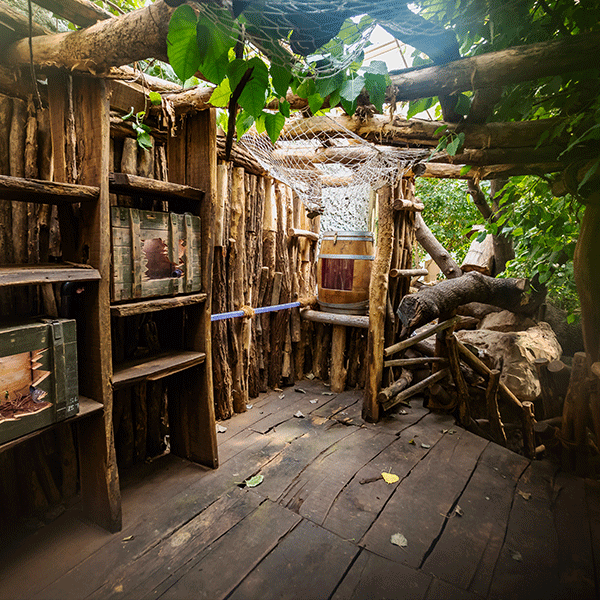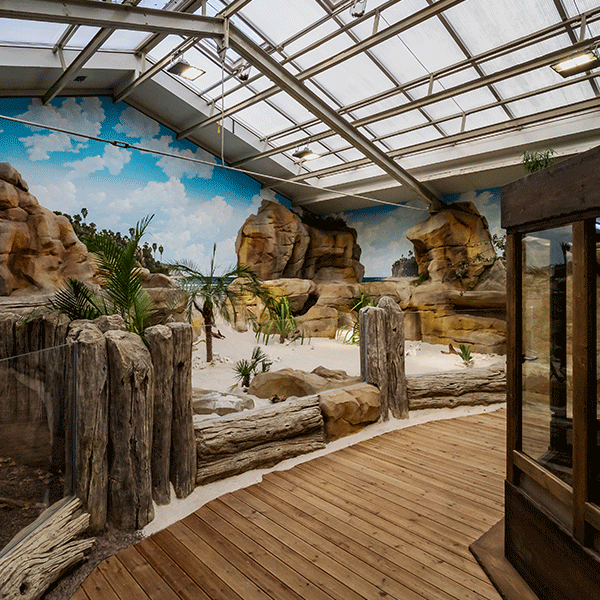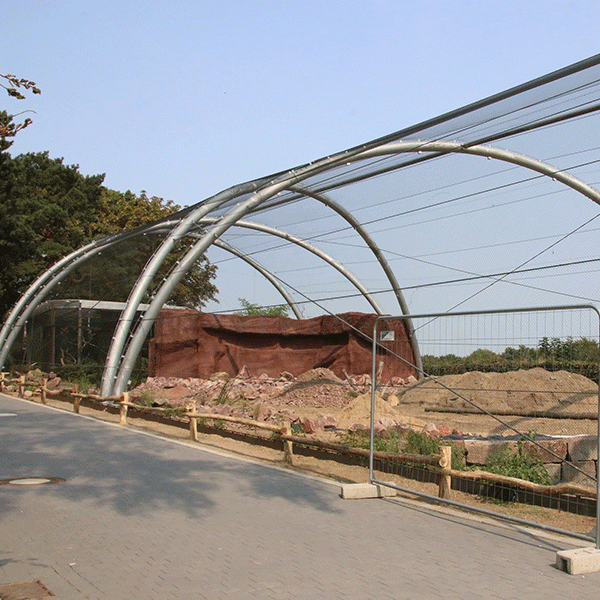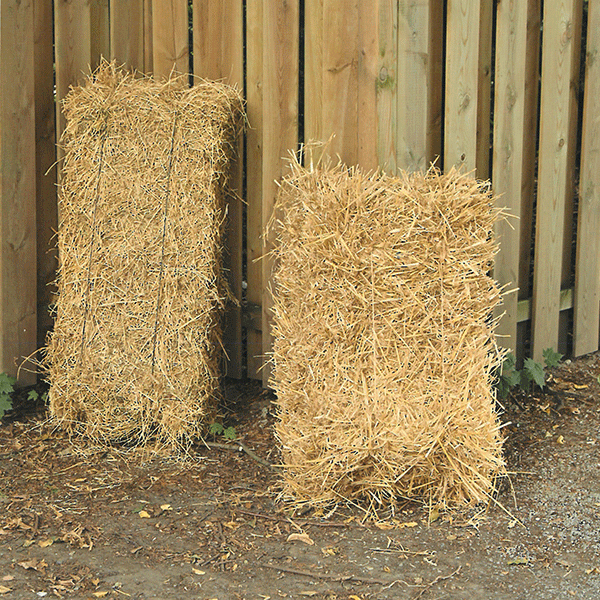Our Master plan
The Zoo Duisburg master plan is a future concept that represents the operation of the zoo in such a way that it is set up in the best possible way under the existing framework conditions. It should provide a direction or guideline for the next 25 years. The master plan reflects the future strategic direction and is a flexible plan that is continuously processed and implemented. This does not include a new planning of the zoo, but a gradual processing of renovation and modernization measures including an increase in attractiveness.
Current projects

GEBAG Ant Colony in the Rio Negro
Project status: Completed in June 2021Project status: Completed in June 2021
The newly created living space for the ant colony extends over two floors and, thanks to its unusual design, blends perfectly into the existing landscape of the Rio Negro tropical hall. Converted wine barrels and wooden crates were transformed by hand with great attention to detail into unique ant dwellings. Transparent pipelines connect the individual components of the ants' colony with each other, providing fascinating insights into the world of the little rainforest inhabitants. "As a municipal housing company, GEBAG has the task of offering housing for everyone in Duisburg. Therefore, it was a special pleasure for us to make this unusual new project in Duisburg Zoo possible - and thus create living space for the minutest of beings. Watching the ants at work is really exciting," says GEBAG's managing director Bernd Wortmeyer enthusiastically.
Iguana Island in the Aquarium
Project status: Completed in August 2021
The new inhabitants of the approximately 120 m² covered Caribbean Hall have moved in and have settled into their new surroundings. Ivan, a 1.25-metre-long Cuban rock iguana, paved the way. Ivan belongs to an endangered species whose population is declining in its original habitat. Light-coloured sand, rocks and low-growing plants characterise the landscape-appearance of the exhibit. Another inhabitant of the new enclosure flutters above Ivan the Iguana: an inconspicuous, rusty-brown Socorro pigeon. The last time an example of this bird was observed in its original habitat was in 1972. Since then, the Socorro pigeon has been considered "extinct in the wild". It is only thanks to zoos that the species has survived under protected conditions. In this thematically-fitting landscape design, from a wooden walkway visitors to the new hall can also encounter Graham’s anoles, Jamaican boas and Cuban giant katydids, as well as the Cuban rock iguanas, Cuban tree rats and the Socorro pigeons.


The pheasantry becomes an outback aviary
Project status: Completed July 2022
With the construction of the Outback Aviary, the Zoo is further expanding its Australian focus and creating space for new animal species. The scenery inside the enclosure will be reminiscent of Australian bushland. Yellow-footed rock wallabies will hop through the tall grass, plumed whistling ducks will take a refreshing dip in the watering hole in front of an abandoned farm, and multi-coloured parakeets will take a rest by the quietly babbling stream. Lone eucalyptus trees, grasses and rocks will dominate the landscape. The landscaping of the aviary, which measures around 630 m² and is up to 7 metres high, is in full swing. The course of the stream has been modelled, the larger rocks have been set in place and the preliminary work for the further design has begun. The artificial rock wall at the back of the aviary has also been erected. It will offer the rock kangaroo additional space to climb. The stable building, which has been erected outside the aviary and designed in the style of an abandoned farm, has already been built and the interior work is currently taking place.
New construction of a hay barn
Project status: in planning
Currently, there are no storage facilities for hay on the zoo grounds, which means that long delivery routes and times are regularly required. After completion of the new building of the service yard, a hay barn is to be built on part of the site of the old service yard. The hay barn will serve as a storage area for hay, straw and alfalfa.

